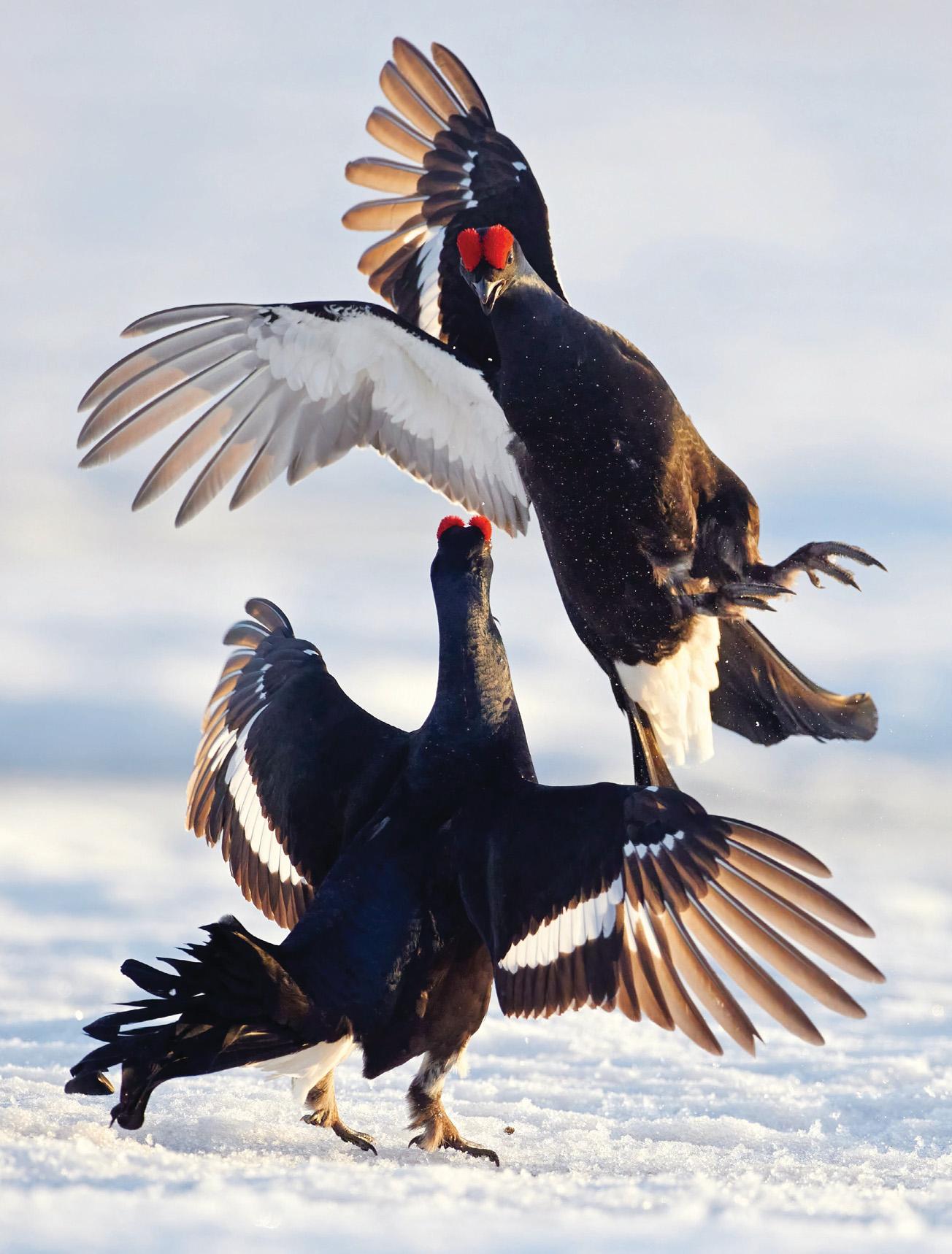
AS the US writer Nora Ephron wrote in the movie Heartburn, 'If you're looking for monogamy, you'd better marry a swan'. Some species of bird do, indeed, pair for life, yet other species including most songbirds are 'socially monogamous'. This means that, although they will form a pair for the entire breeding season, to help one another raise their young, the male (and, often, also the female) may also sneak off and try to mate with other birds.
In the male's case, this strategy is likely to mean he will have more offspring-even if he might never see some of them. For the female, mating with two or three males does not increase the number of chicks she can have, as she will still lay the same number of eggs. However, by mating with several males, she does benefit from having a range of young with different genetic qualities inherited from their fathers, some of which will be more likely to survive than others. This avoids, as it were, putting all her eggs in one basket.
Birds pair up by using two basic techniques. Songbirds, which make up more than half of all the world's bird species, have (as their name suggests) an attractive, tuneful song. This is almost always uttered by the male and serves two purposes: to attract and keep a female; and, at the same time, to warn nearby males to keep out of his territory and away from his mate.
Many larger birds, whose vocal talents are more limited, use a visual courtship display instead. This can be something quite basic, with the male simply showing off his attractive plumage to the female. Although it can also evolve into a truly memorable routine, in which both the male and female perform a complex series of dance moves, often exactly mirroring one another's movements. For humans, our own abilities to sing and dance were originally influenced by these incredible natural sounds and sights.
This story is from the {{IssueName}} edition of {{MagazineName}}.
Start your 7-day Magzter GOLD free trial to access thousands of curated premium stories, and 9,000+ magazines and newspapers.
Already a subscriber ? Sign In
This story is from the {{IssueName}} edition of {{MagazineName}}.
Start your 7-day Magzter GOLD free trial to access thousands of curated premium stories, and 9,000+ magazines and newspapers.
Already a subscriber? Sign In

Tales as old as time
By appointing writers-in-residence to landscape locations, the National Trust is hoping to spark in us a new engagement with our ancient surroundings, finds Richard Smyth

Do the active farmer test
Farming is a profession, not a lifestyle choice’ and, therefore, the Budget is unfair

Night Thoughts by Howard Hodgkin
Charlotte Mullins comments on Moght Thoughts

SOS: save our wild salmon
Jane Wheatley examines the dire situation facing the king of fish

Into the deep
Beneath the crystal-clear, alien world of water lie the great piscean survivors of the Ice Age. The Lake District is a fish-spotter's paradise, reports John Lewis-Stempel

It's alive!
Living, burping and bubbling fermented masses of flour, yeast and water that spawn countless loaves—Emma Hughes charts the rise and rise) of sourdough starters

There's orange gold in them thar fields
A kitchen staple that is easily taken for granted, the carrot is actually an incredibly tricky customer to cultivate that could reduce a grown man to tears, says Sarah Todd

True blues
I HAVE been planting English bluebells. They grow in their millions in the beechwoods that surround us—but not in our own garden. They are, however, a protected species. The law is clear and uncompromising: ‘It is illegal to dig up bluebells or their bulbs from the wild, or to trade or sell wild bluebell bulbs and seeds.’ I have, therefore, had to buy them from a respectable bulb-merchant.

Oh so hip
Stay the hand that itches to deadhead spent roses and you can enjoy their glittering fruits instead, writes John Hoyland

A best kept secret
Oft-forgotten Rutland, England's smallest county, is a 'Notswold' haven deserving of more attention, finds Nicola Venning